Al-Maqrīzī or Maḳrīzī, whose full name was Taqī al-Dīn Abū al-'Abbās Aḥmad ibn 'Alī ibn 'Abd al-Qādir ibn Muḥammad al-Maqrīzī (1364–1442) was a medieval Egyptian historian and biographer during the Mamluk era, known for his interest in the Fatimid dynasty and its role in Egyptian history.

Cleopatra's Needles are a separated pair of ancient Egyptian obelisks now in London and New York City. The obelisks were originally made in Heliopolis during the New Kingdom period, inscribed by the 18th dynasty pharaoh Thutmose III and 19th dynasty pharaoh Ramesses II. They were later moved to the Caesareum of Alexandria, which had been conceived by Ptolemaic Queen Cleopatra VII, for whom the obelisks are named. They stood in Alexandria for almost two millennia until they were re-erected in London and New York City in 1877 and 1881 respectively. Together with Pompey's Pillar, they were described in the 1840s in David Roberts' Egypt and Nubia as "[the] most striking monuments of ancient Alexandria".

Egyptian Revival is an architectural style that uses the motifs and imagery of ancient Egypt. It is attributed generally to the public awareness of ancient Egyptian monuments generated by Napoleon's conquest of Egypt and Admiral Nelson's defeat of the French Navy at the Battle of the Nile in 1798. Napoleon took a scientific expedition with him to Egypt. Publication of the expedition's work, the Description de l'Égypte, began in 1809 and was published as a series through 1826. The size and monumentality of the façades discovered during his adventure cemented the hold of Egyptian aesthetics on the Parisian elite. However, works of art and architecture in the Egyptian style had been made or built occasionally on the European continent and the British Isles since the time of the Renaissance.

The Institut français d'archéologie orientale, also known as the French Institute for Oriental Archaeology in Cairo, is a French research institute based in Cairo, Egypt, dedicated to the study of the archaeology, history and languages of the various periods of Egypt's civilisation.

Heliopolis was a suburb outside Cairo, Egypt, which has since merged with Cairo as a district of the city and is one of the more affluent areas of Cairo. Named for the ancient Egyptian city of Heliopolis to which it lies adjacent, modern Heliopolis was established in 1905 by the Heliopolis Oasis Company headed by the Belgian industrialist Édouard Empain and by Boghos Nubar, son of the Egyptian Prime Minister Nubar Pasha. It is the location of the Cairo International Airport. The population of Heliopolis is estimated at some 142,968 individuals (2016).

The Heliopolis Palace is one of the three Egyptian presidential palaces and residences, the others being Montaza Palace and Ras el-Tin Palace, for the executive office of the President of Egypt. It is located in the suburb of Heliopolis, northeast of central Cairo and east of the Nile in Egypt. It was originally built as the grand Heliopolis Palace Hotel in 1910. Now it is for the use of the President of Egypt.
Henry Habib Ayrout, S.J. was an author, educator, and Jesuit priest in Egypt.
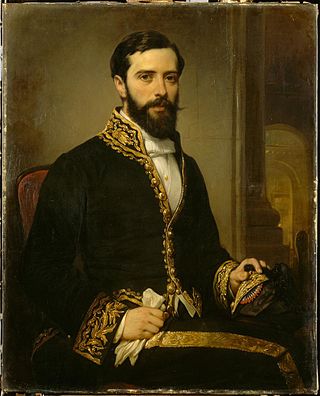
Théodule Charles Devéria was a French photographer and Egyptologist who lived in the 19th century. He is known for his collaboration with Auguste Mariette. His younger brother was Gabriel Devéria.

Revivalism in architecture is the use of visual styles that consciously echo the style of a previous architectural era. Notable revival styles include Neoclassical architecture, and Gothic Revival. Revivalism is related to historicism.
Habib Ayrout was a Syro-Lebanese Egyptian who participated in the planning and construction of Heliopolis ./
Charles Habib Ayrout was an architect practicing in Cairo and is considered one of that city's Belle Epoque/Art Déco (1920–1940) architects for his landmark buildings and villas.
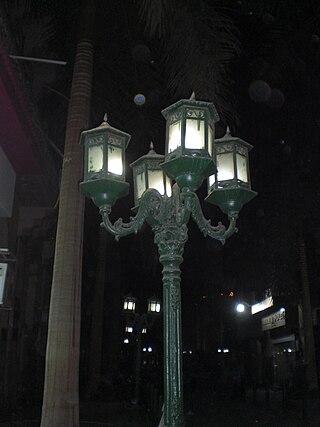
Qasr El Nil Street is a street in downtown Cairo, Egypt, one of the biggest streets in Cairo, with many businesses, restaurants, and an active nightlife.
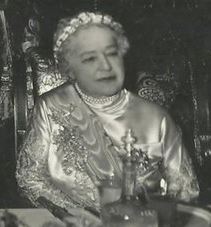
Melek Hassan Tourhan was the second wife of Sultan Hussein Kamel of Egypt. After her husband ascended the throne in 1914, she became known as Sultana Melek.
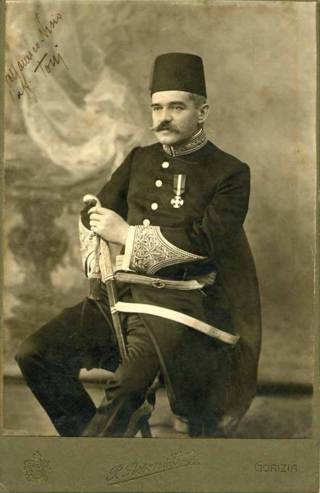
Antonio Lasciac (Italian) or Anton Laščak (Slovene) was an architect, engineer, poet and musician of Slovene descent, who designed the Khedive's Palace in Istanbul and the Tahra Palace in Cairo.

Gustave Jéquier was born in and died in Neuchâtel, Switzerland. He was an Egyptologist and one of the first archaeologists to excavate ancient Persian cities in what is now Iran. He was a member of Jacques de Morgan's 1901 Susa expedition, which led to the discovery of the famous Code of Hammurabi, now on display in the Louvre.

May Telmissany is an Egyptian-Canadian novelist, translator, film critic and academic. She now teaches Arabic studies and cinema at the University of Ottawa in Ottawa, Ontario, Canada.
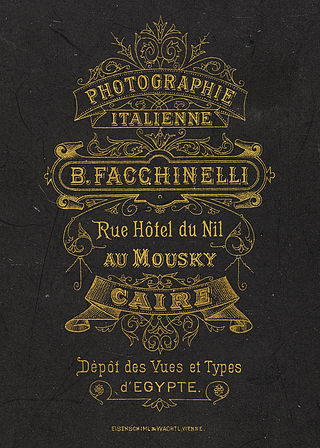
Beniamino Facchinelli was an Italian photographer working in Cairo, Egypt during the late 19th century. Most of his known work is housed in the Bibliothèque nationale de France and has been recently digitized.

Arthur-Ali Rhoné was a wealthy amateur French Arabist and Egyptologist. He was known for his efforts to prevent the vandalism of monuments in Cairo, Egypt, and in Paris, France. Often the destruction was done in the name of restoration, or of other improvements to the city.
Jules Edmond Camille Robida was a French architect and urban planner.














